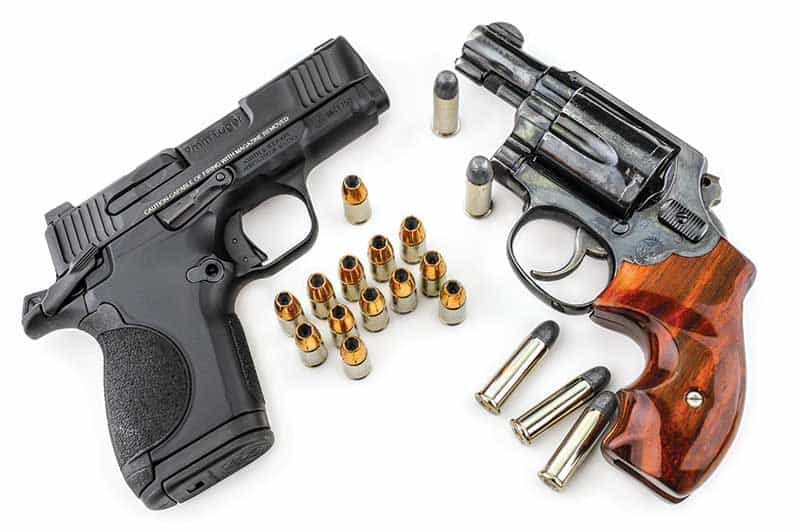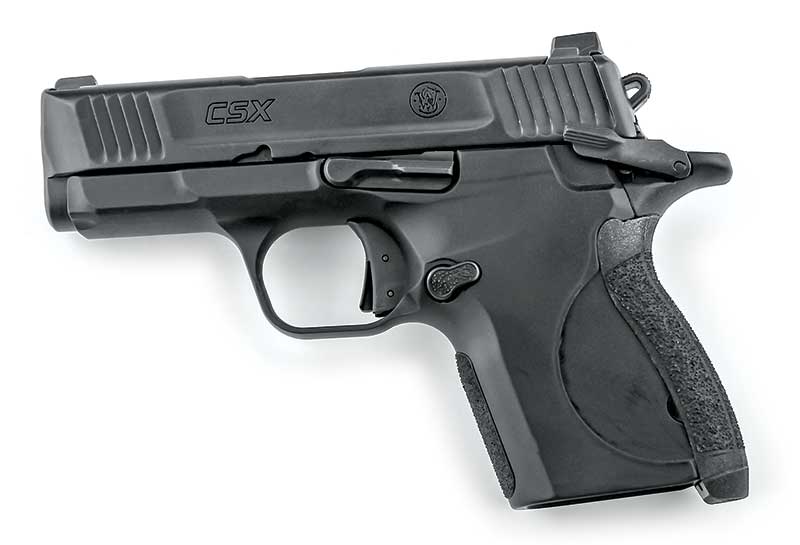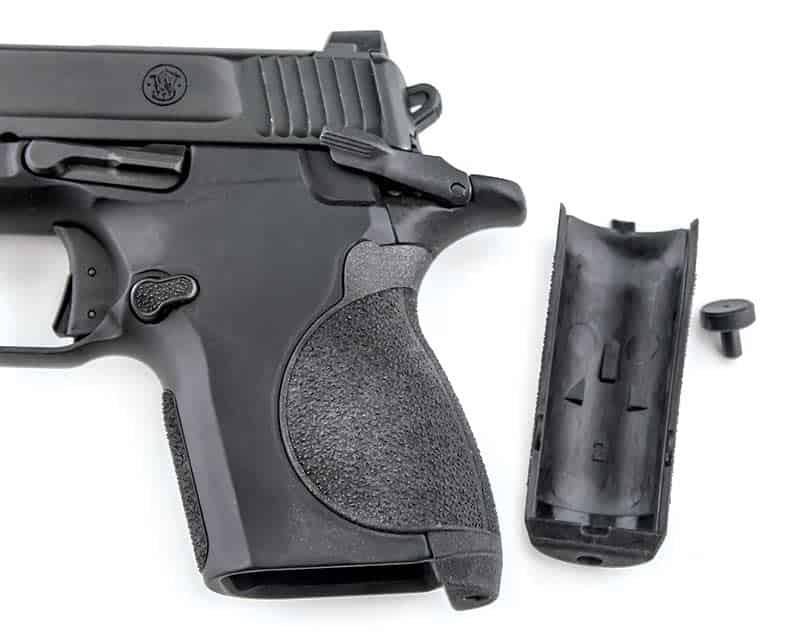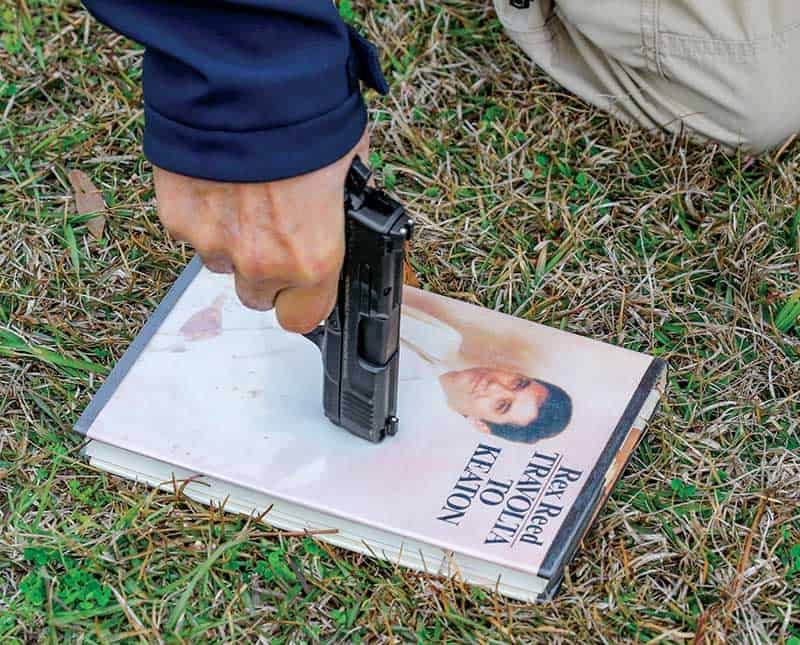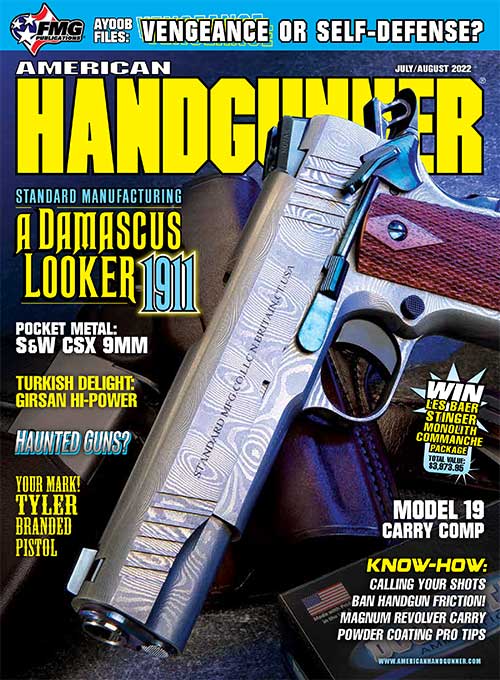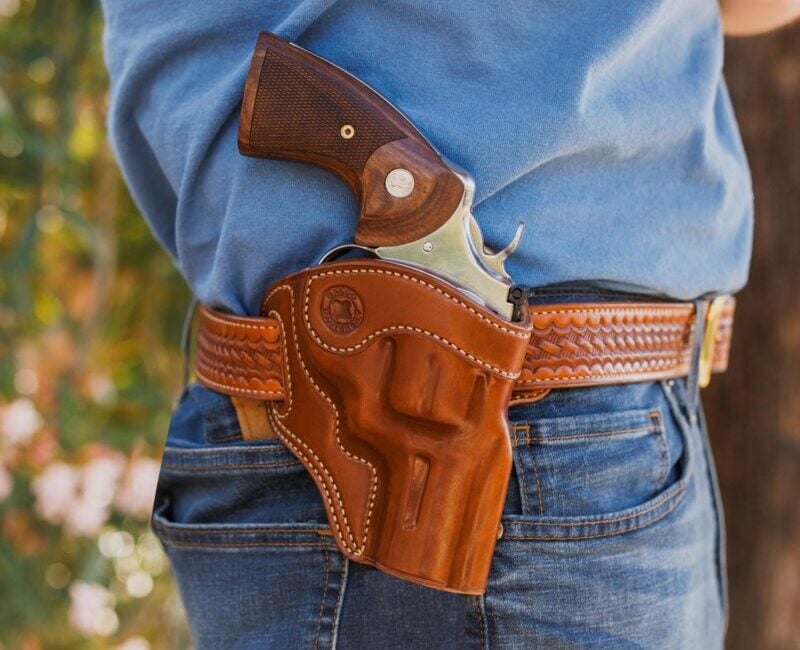Old School Meets New Wave: Smith & Wesson CSX 9mm
As 2021 ticked into 2022, word leaked about S&W’s new CSX pistol. As a higher capacity 9mm micro-compact, it rides the nouveau ballistic wave. The aluminum frame, hammer-fired and single-action cocked and locked design is decidedly old school. Didn’t Colt do this with their lightweight Commander of 1950?
This pistol competes directly with the Springfield EMP series and the Kimber Micro 9, but with a few more 9mm rounds on board: each CSX comes with one 10- and one 12-round magazine. S&W marketing manager Corey Boudreau tells me the name is an homage to the Chief Special of 1950, which became the most popular concealed carry handgun of its time. It also shared the same 19.5-oz. unloaded weight as this new CSX.
I asked Corey for some background on the design work and he replied, “The lead engineer on this was Brett Curry, the engineer also responsible for the original M&P. Brett had been playing with this idea on his own before it officially kicked off into development, so the exact timing isn’t entirely clear. But once green-lighted, the project took around a year and a half.”
Initial Impressions
Low bore axis. Decent fixed three-dot sights. Southpaw-friendly, with ambidextrous slide stop and thumb safety, and a user-installable starboard side magazine release button. Some adjustability to the hand, with an attachable shell giving more hand traction. The slide can be racked with the thumb levers “on safe,” providing one more little safety net. All good so far.
Owen Davis, a gun shop staffer and part-time member of my testing team, weighed the trigger pull on a Lyman digital gauge and found it averaging between 6 and 61/2 lbs. Our test team ranged from 5′-tall females to 6′-plus males with proportional-sized hands. Without exception, everyone appreciated the CSX’s short trigger reach. For small hands and short fingers, it’s just right for the pad of the trigger finger. For average or larger hands, it takes the index finger naturally to the distal joint, the sweet spot DA revolver masters call “the power crease.”
The CSX’s trigger take-up is very short before you hit the “wall” of firm resistance. After that, a short “roll” takes you to the shot with a clean break with no palpable “backlash.” The trigger reset is between short and medium — make sure you bring your finger all the way forward. As the trigger reset, we found a tiny “tick” before a full reset — don’t let this trick you. Let the CSX’s trigger come all the way forward until it stops before you begin the next press. Since we lose sense of touch due to vasoconstriction in a fight-or-flight state anyway, that’s what I’ve long recommended with any firearm.
If you’ve worked the thumb safety on a 1911, you’ll find the CSX much the same. It is far more natural and ergonomic than the one on the uber-popular Shield. It is firm enough to avoid unintentional “off-safes” and easy to wipe into the “fire” position with either hand. My extremely arthritic right thumb required only a slight shifting of grasp to on-safe the CSX, and my unafflicted left hand required no shifting at all.
Interestingly enough, I could not get the 10th round into the short magazine without a magazine-filling tool. Still, it was easy enough to get all 12 into the long magazine. The full 12-rounder inserted easily and positively locked into place even with the slide forward.
Firing Line
Recoil is surprisingly mild, even for a 9mm, and not bad at all with 127-grain Winchester Ranger-T +P+. One thing that endeared this pistol to me was the recurve at the lower rear of the grip frame. This is subjective, but it locks solidly into the hollow of my palm, the same factor that in the G26/27/33 series of Baby GLOCKs allows me to shoot them as well as their full-size cousins until I get past 30 yards or so.
Comments from our test team were enlightening. John Strayer, Five-Gun Master in IDPA and winner of several state and regional championship titles: “I like this gun!”
Lt. Wayne Musgrove, a Sheriff’s Department SWAT team leader and senior firearms instructor: “It feels as if I’m shooting a .380!”
My wife, a shooting champion and Princess of Polymer Pistols who thinks anything with a hammer belongs in a museum instead of in a holster: “Yes. Yes!”
A man who must remain nameless, a firearms instructor for a school system that has armed its teachers: “We got them single-stack Shield 9mms initially because they wanted a manual safety. They are now asking for something with a higher capacity. They had trouble manipulating the safety on the Shields … It makes sense as a replacement for the Shields when the time comes.”
Accuracy
At 25 yards from a Caldwell Matrix rest on a concrete bench, I tested with the three most popular bullet weights for the caliber. Each five-shot group was measured overall, center-to-center again for the best three. The first measurement indicates what it can do in experienced hands under perfect conditions. In contrast, the second in my testing has closely approximated what the same gun and load is likely to do with all five from a machine rest.
Winchester USA brand 147-grain jacketed truncated cone subsonic plunked five shots into 2.45″ with the “best three” measurement cutting that by more than half at 1.20″. The little 9mm was off to a good start. The 124-grain SIG V-Crown jacketed hollow point did slightly better overall: 2.35″ for all five with the closest-together trio in 1.50″.
At the 115-grain point, though, it looked first as if it was going to hell. From a production lot I’ve topped shooting contests with, Federal American Eagle full metal jacket blew out to 6.55″ overall, albeit with 2.5″ for the best three. I tried this again with similar results. My first impression was this pistol simply didn’t like 115 grain.
And I was wr-wr-wrong! A day later, I tried it with 115-grain SIG V-Crown JHP and was rewarded with a group that measured 2.55″ for all five and the best three, 1.70″. Sometimes we just have to be patient and try different loads to see which gets along best with the firearm in question. Discounting the one 115-grain load the CSX didn’t like, the three bullet weights added up to an average of 2.45″ overall five-shot groups at 25 yards. The “best three” measurements averaged 1.47″. I consider this extraordinary 25-yard accuracy for a “pocket pistol.”
Now, grouping is one standard of accuracy, but point of aim vis-à-vis point of impact is another, and sometimes more important, particularly on a fixed sight gun like this. The CSX came out of the box “shooting where it looked.” If I held the sights center and pressed its trigger consistently, it knocked down 8″ steel Bianchi Plates six for six from the 25-yard line. Points to S&W for attention to detail!
Perks & Quirks
A significant advantage with this pistol is that pressing straight in on a contact target, it will discharge on command instead of going out of battery — a potential life-saver with a self-defense handgun and a cardinal revolver advantage. I’m surprised S&W doesn’t advertise it as such.
For pocket carry, the sleek rear profile of the short slide with the hammer cocked and locked removes a snag point in a pocket draw that we usually see with striker-fired pistols of similar size. The ambi thumb safety has a positive detent, but I’d still like to see a pocket holster for it cut to hold that lever in the “safe” position. With such a combo, the CSX could replace a J-Frame revolver as my preferred pocket carry.
The CSX is more “shootable” than its size would indicate. It gave me an easy 100% score on a timed “PPC-speed” qualification. Reliability has been 100% with decent ammo. I observed one misfire attributed to water-soaked and corroded ammunition, which I can’t hold against the pistol.
On the downside, those who “ride the link” when working the trigger may experience what feels like a “false reset.” Boudreau explains the CSX “has a firing pin block in the slide, and if you ride the trigger forward through the reset cycle, you can feel the trigger bar sweep off the firing pin block just a slight tick before the full reset is achieved. I’ve found the issue seems to go away as the gun breaks in.”
Overall, I liked this pistol enough to buy it and it may become a companion in 10-round states, for which I’ve ordered a couple extra of the short magazines. It may become a pocket gun for me with some more experimentation. The CSX may share a name with a railway, but it ain’t gonna be a train wreck. At $609 MSRP, I predict success for this neat little pistol.
For more info: Smith-Wesson.com

